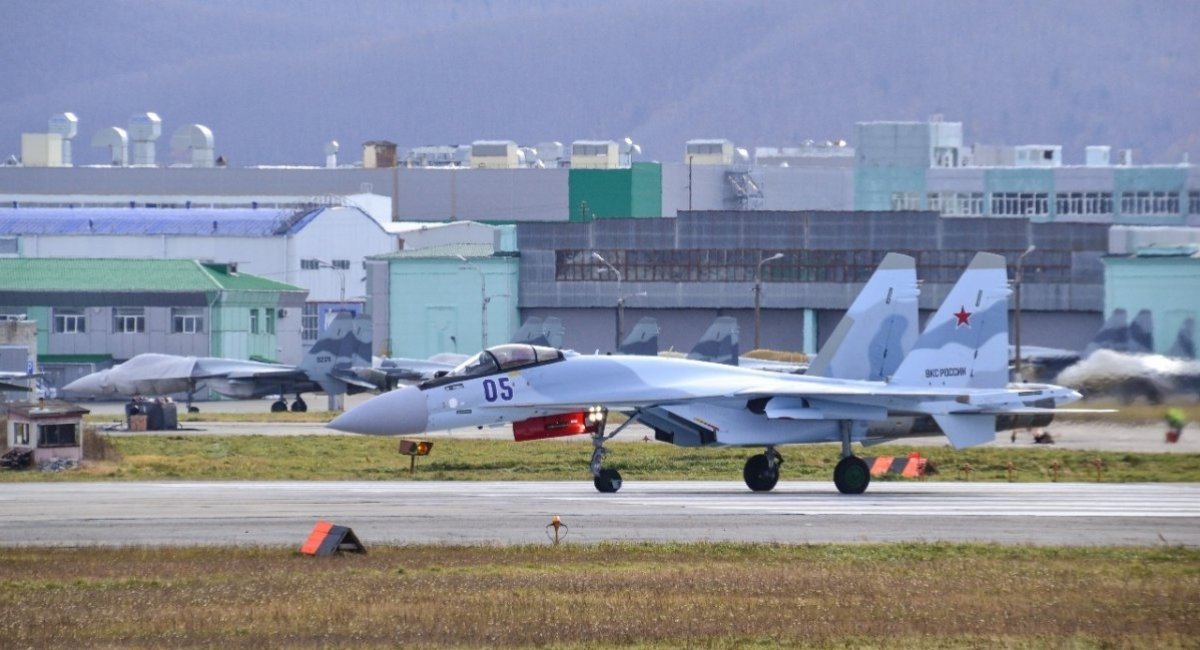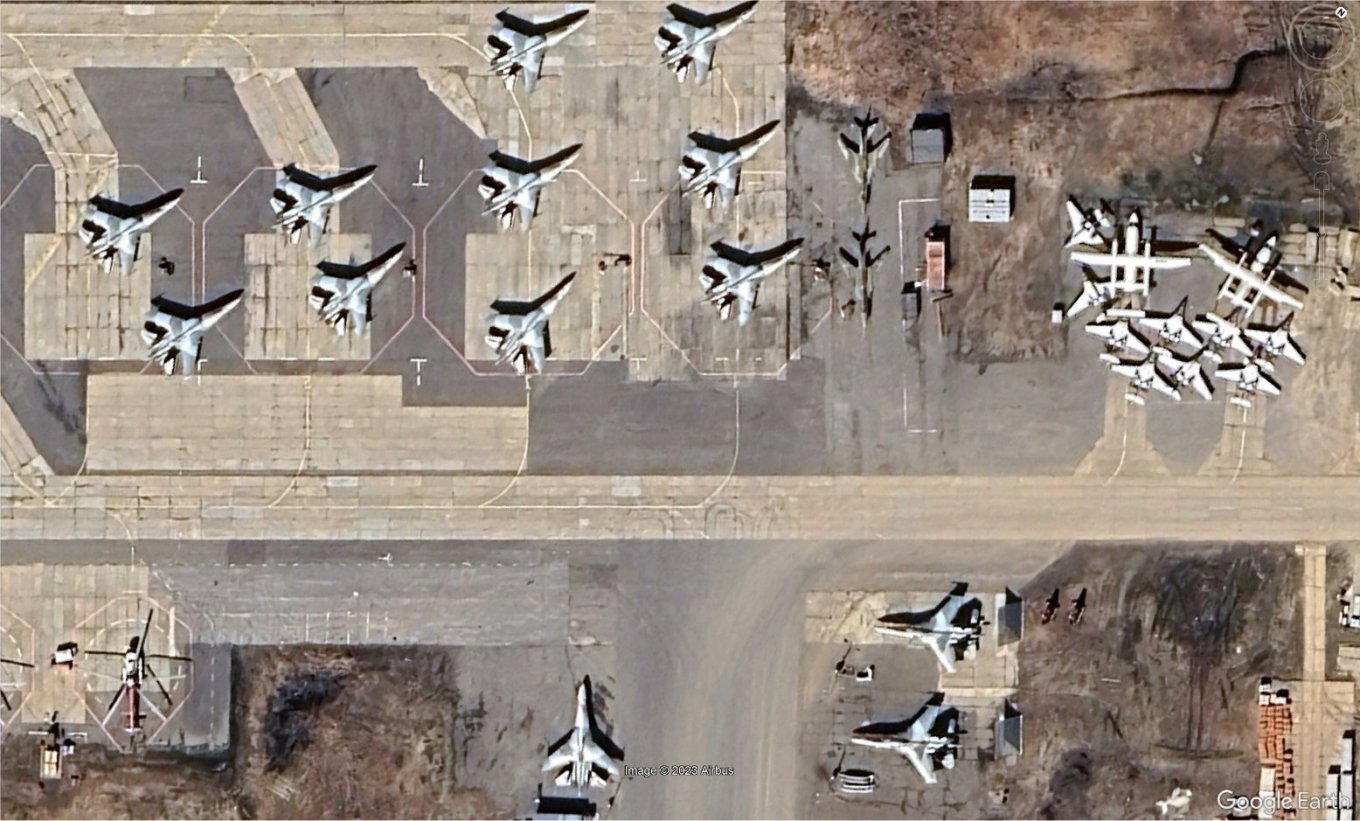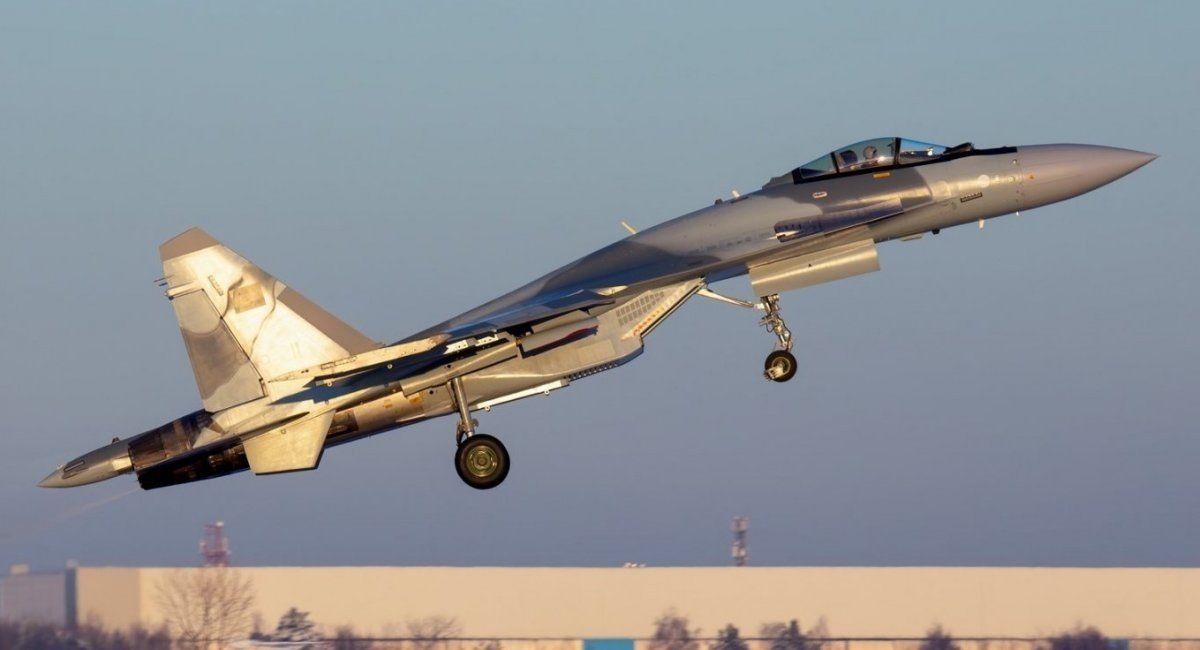
Either there is a problem with the real condition of the aircraft, or it is a kind of “exchange rate” of technologies between Moscow and Tehran.
Airbus/Ben-Reuter’s OSINT analyst posted an image on Twitter that shows, among other things, the following: in May 2023, 13 of the initially 24 “Egyptian” Su-35SEs, which Egypt itself refused to take back in 2020, were already at the site of the Russian aircraft factory in Komsomolsk-on-Amur (KnAAZ). This seems to be a tangential confirmation of the beginning of the transfer of these aircraft to Iran, which Tehran itself officially announced in May of this year.
But it’s the odd number of airplanes that have already been transferred that is confusing. Especially if we consider that the first Su-35 was spotted over the Iranian capital back in April 2023, which means that the movement of 11 aircraft was clearly “broken up” into different “tranches” over a long period of time.

There are two explanations for this interesting phenomenon. The first is the prosaic fact that the number and pace of actual deliveries of aircraft from Russia to Iran directly depend on how Russian specialists manage to return to service the Su-35SEs that have been stored in the open air for several years without an actual owner. There could well have been “cannibalism of spare parts” when, in order to fulfill the plan to produce combat Su-35s for the Russian Air Force, the KNAAZ specialists could remove the necessary components from the “Egyptian” aircraft that had to be returned.
But there may be another explanation: the pace of the Su-35 transfer from Russia to Iran actually depends on the “exchange rate” of technologies that Moscow and Tehran have already agreed on. However, it is worth noting that this “exchange rate” of technologies may turn out to be “non-linear.” On the one hand, Iran presented the “hypersonic” Fattah missile, which seems to have involved Russia. On the other hand, the Russians themselves have gone so far as to buy from the Iranians even shells and gun barrels from T-72 tanks.


